NOVEMBER 9, 2022 : The Zagori is a mountainous region in Northwestern Greece. It is a tourist destination for Israelis that the rest of the world does not seem to know about. In researching places to go for this trip, I did not come across it (probably because I research in English and not in Hebrew). Only when I asked my neighbor to recommend places from his trip, his immediate reaction was “The Zagori”. The what? I had never heard of it.
Upon his recommendation, I added it to our itinerary. In planning the visit to the Zagori, I read reviews for accommodations in the area and almost all the reviews were from Israelis. During our time there, it was the first time in Greece that we heard lots of Hebrew. The first night, our AirBnb came with breakfast served in a restaurant. When we entered the restaurant, there were three other families already there. All were Israeli. Among the several Israelis we spoke to while in the area, we met two other couples from our hometown Raanana.
We came to the Zagori basically to do two things – see the Vikos Gorge and to go bridge hunting. The Vikos Gorge is the world’s deepest canyon. It is almost a kilometer deep and in some spots only a few meters wide. On the first day we would see its northern end, and the next day go to a viewpoint from the south.
The Zagori is also known for its many stone bridges. In the mountains, there are several villages. In the past, to reach from one to another, you would have needed to cross a small river at the bottom of the mountain. To facilitate this, the villagers built bridges, usually funded by a benefactor. The benefactor would pay to build the bridge and for its upkeep over the years. The bridge would often then be named after its benefactor. Most of the bridges were built in the 1700’s. There is a bridge that the same benefactor family has been upkeeping for seven generations. Over the next two days, we would visit seven of the bridges in the area.
To reach the Zagori, we drove north from Ioannina. Once again, it was very foggy. Our first stop, on the western outskirts of the Zagori, was the War Museum in Kalpaki. We read that there was a tribute in the museum to Mordechai Frizis.
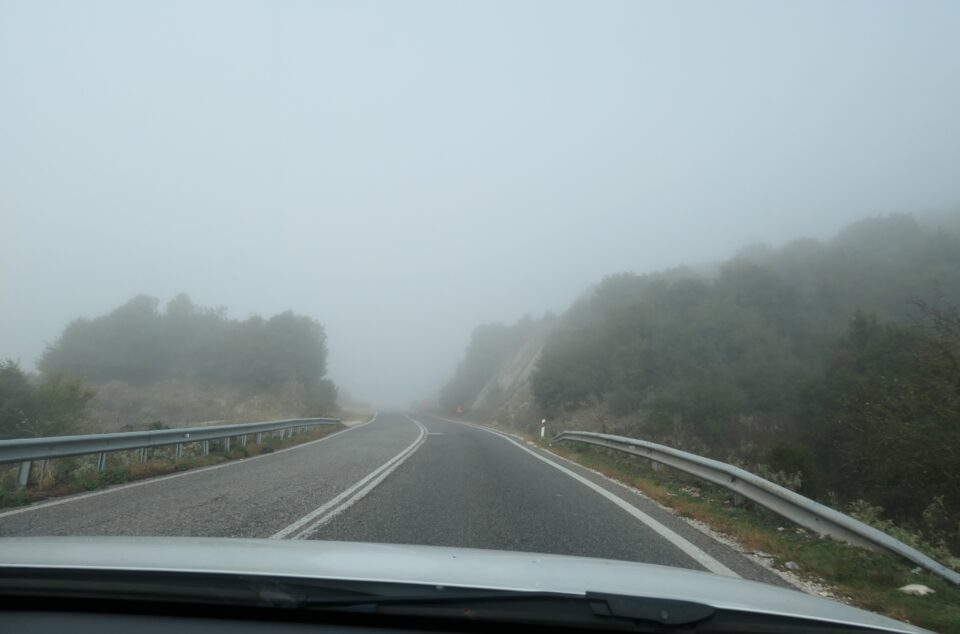
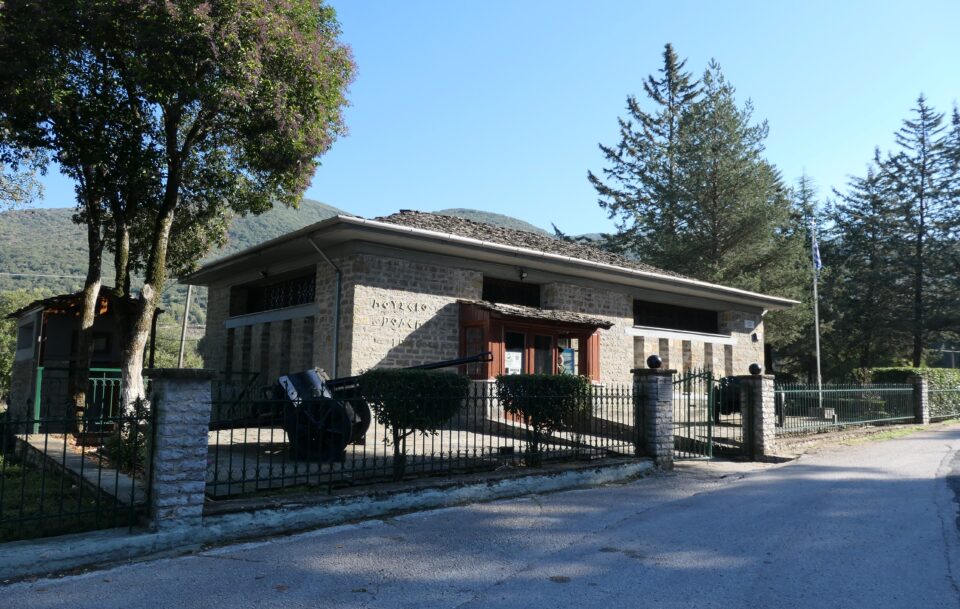
Mordechai Frizis was a Jewish Greek army officer, that fought in WW I, distinguished himself in WW II, and was killed in battle in 1940. Last year, my husband Mark and I attended a zoom lecture about Greek Jewry, and that was where we first learnt about Mordechai Frizis. After the presentation, a woman in the audience spoke, and said she was the granddaughter of Frizis. Her widowed grandmother, her mother (who was a young child at the time), and her uncle, lived in Chalcis, Greece. When the Germans arrived, all the Jews needed to register. They stood in line, and when it was their turn, her grandmother gave her name. The clerk, who was Greek, asked if she was related to Mordechai Frizis. Her grandmother replied that he had been her husband. The clerk whispered, that he will not write down their names, and she should escape with her children from the town immediately. That is how her family survived.
The War Museum in Kalpaki is a small one room museum about the battles to thwart the Italians in the area in 1940. It is manned by two Greek soldiers in uniform. At the entrance, they apologized that their English was not good enough to explain the exhibits to us. We told them we were interested in Mordechai Frizis. They took us inside and showed us his portrait hanging on the wall. All the signage was only in Greek. A small memorial to a big hero.

We walked around, and then sat down for a 10-minute video detailing the war here, that had English captions. It was accompanied by a large 3-D map on the wall that lit up to show on what mountains the battles took place. The point of the movie was that the Greeks stopped the Italian invasion. When Mark asked, “didn’t the Italians eventually capture Ioannina” (as we learned the day before), the soldier , obviously uncomfortable with the question, replied “not exactly”. It was time to move on.
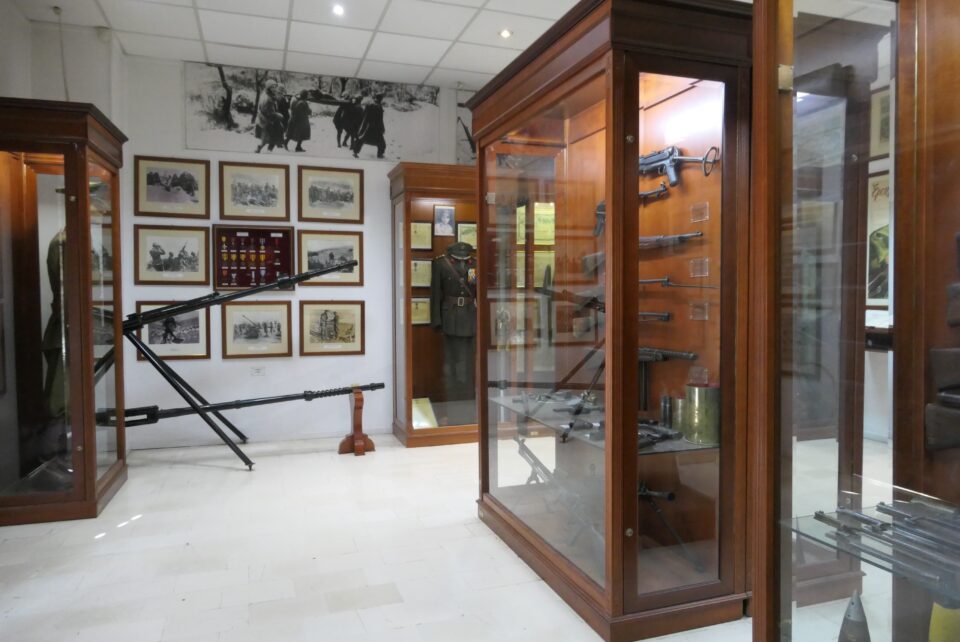
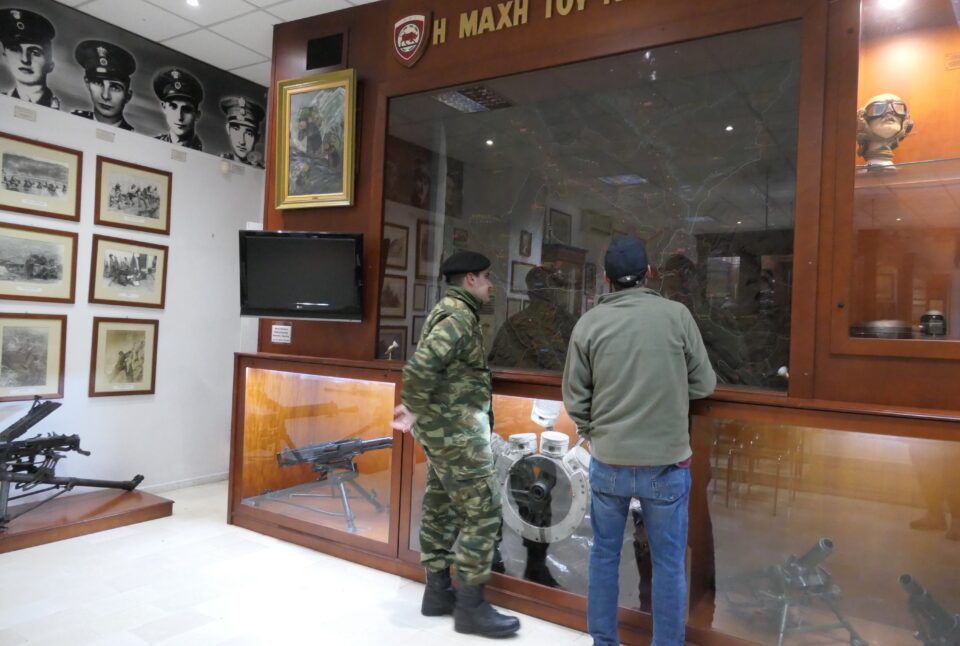
By then, the fog had totally disappeared, and we began our drive in the mountains. Spectacular. We got our first glimpses of the Vikos Gorge.
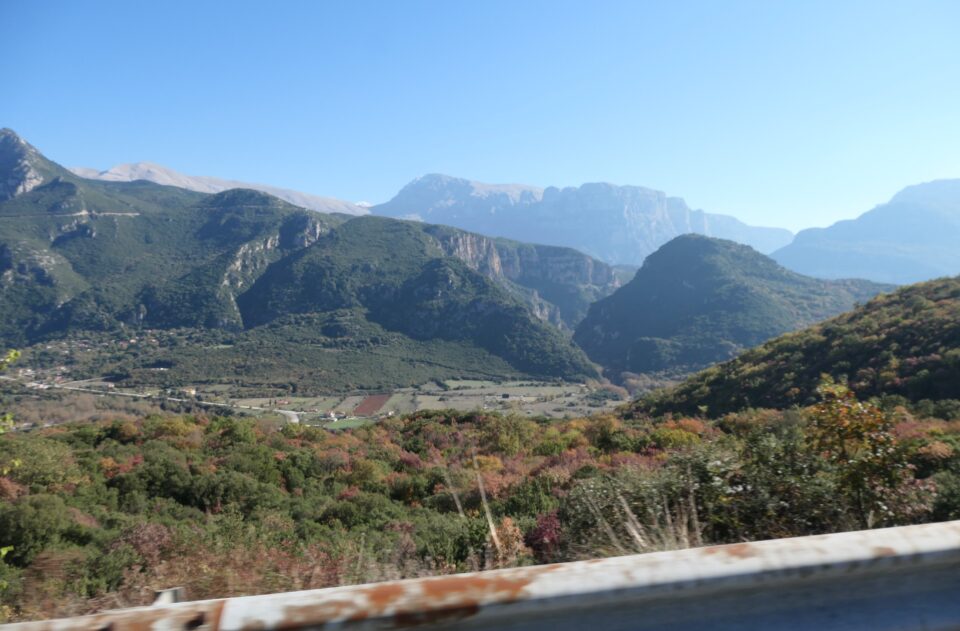
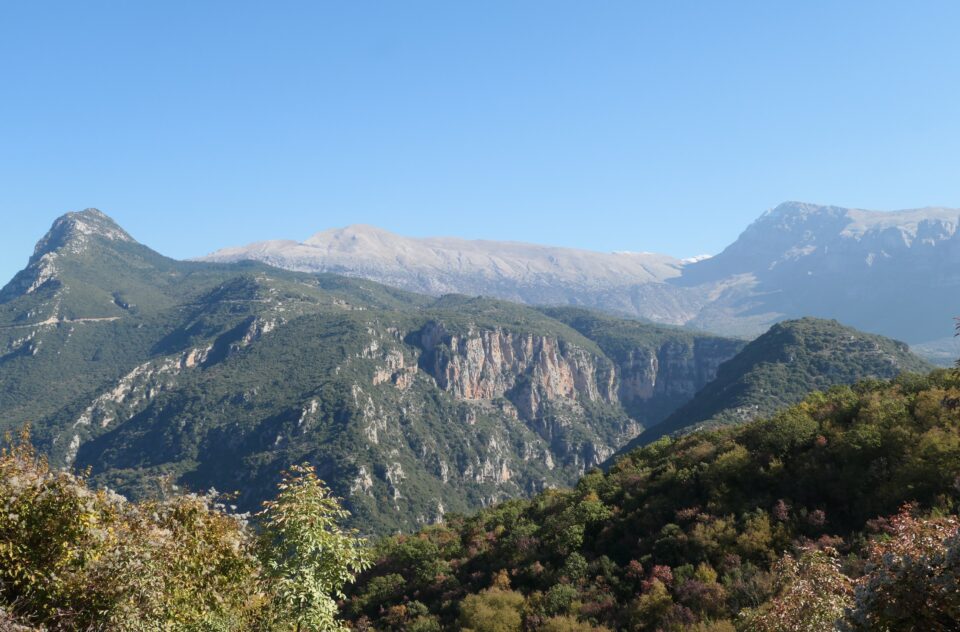
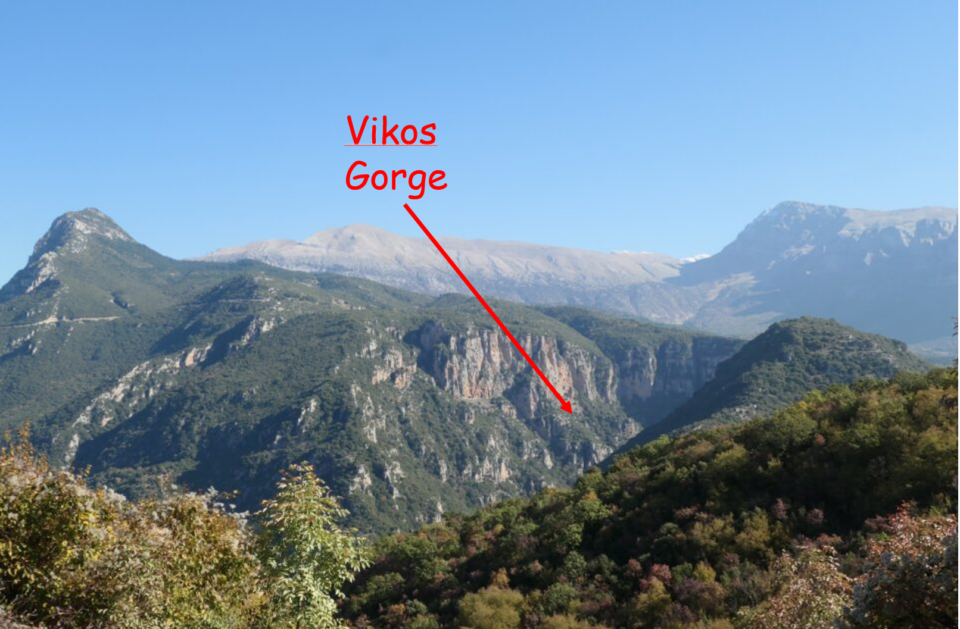
Our first stop in the Zagori mountains, was to see the Voidomatis bridge, also known as the Klidonia bridge. This is a one-arched stone bridge, that was built over the Voidomatis river. The water in this river is crystal clear, is free of pollutants, and is thought to be the cleanest river in Europe. The bridge was built in 1853.
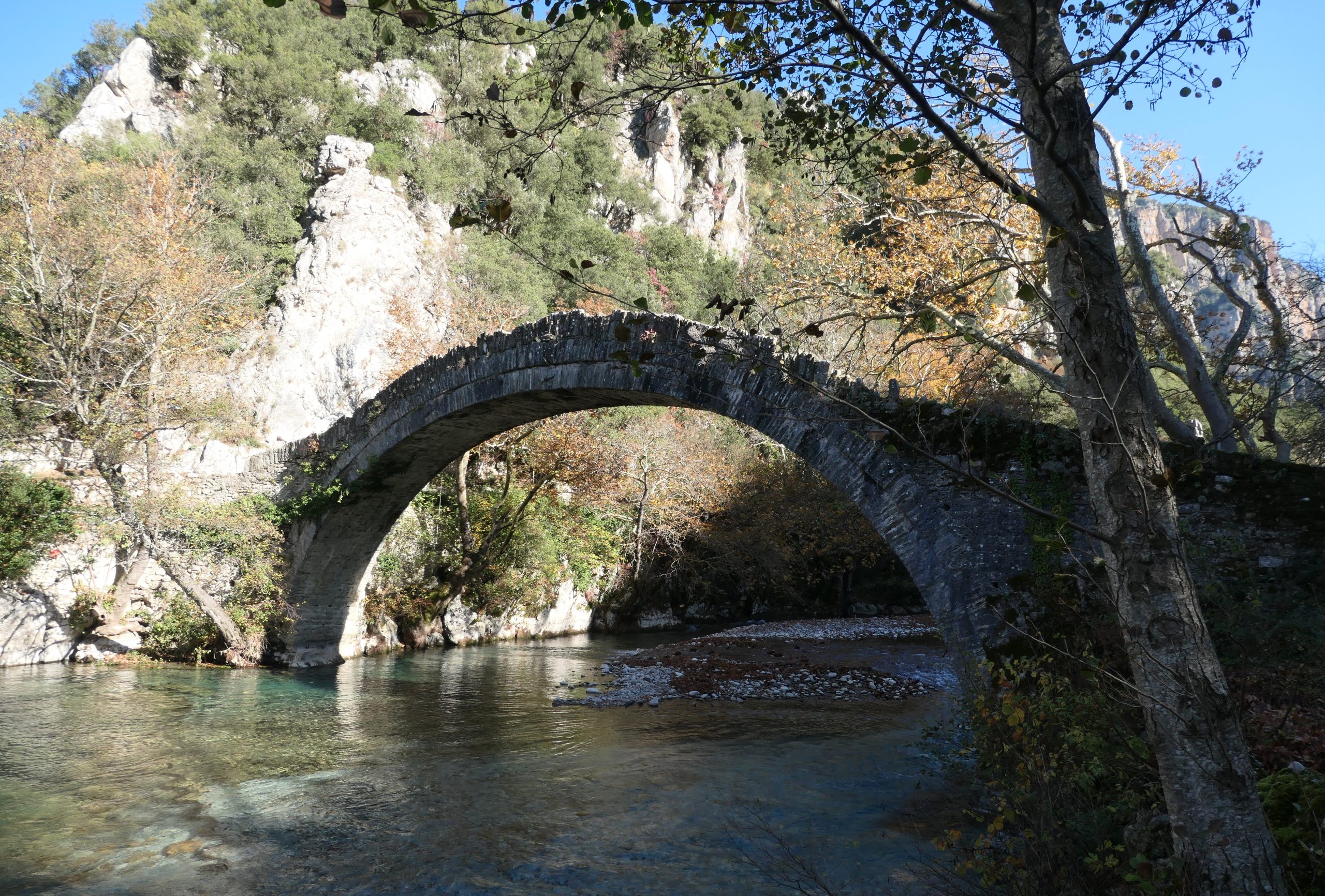
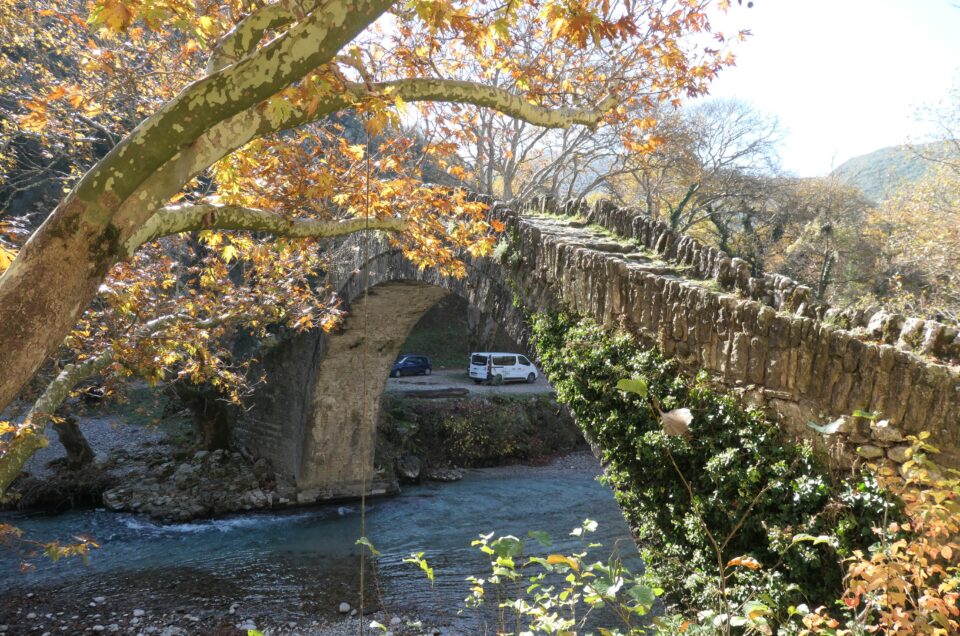
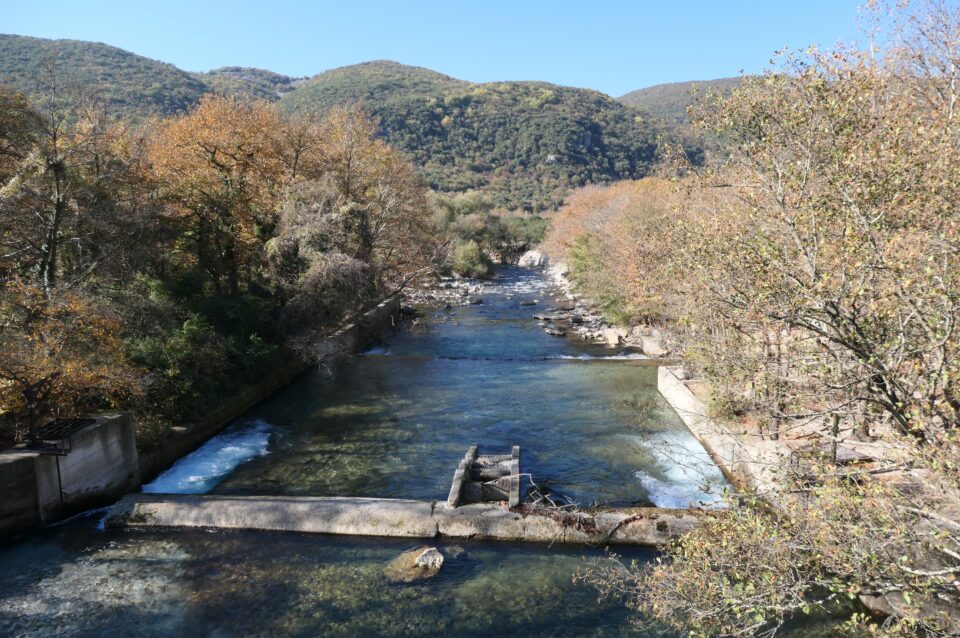

The next bridge we stopped at was a metal bridge, much more modern (1923). It is also built over the Voidomatis river, but further upstream. The water here was a brilliant turquoise. The bank next to this bridge is used to launch rafting trips. We watched as different groups placed their rafts into the water and paddled downriver.
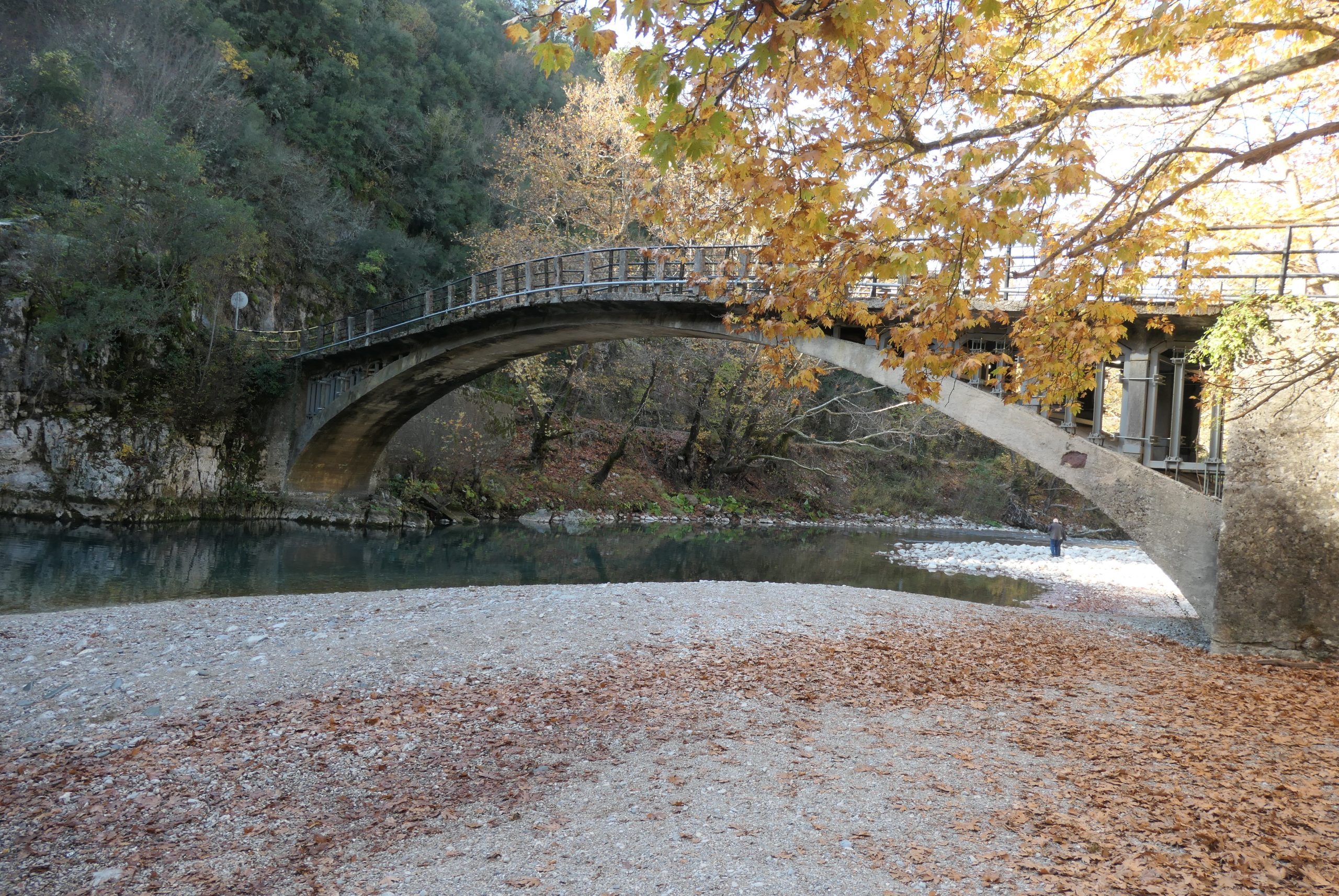
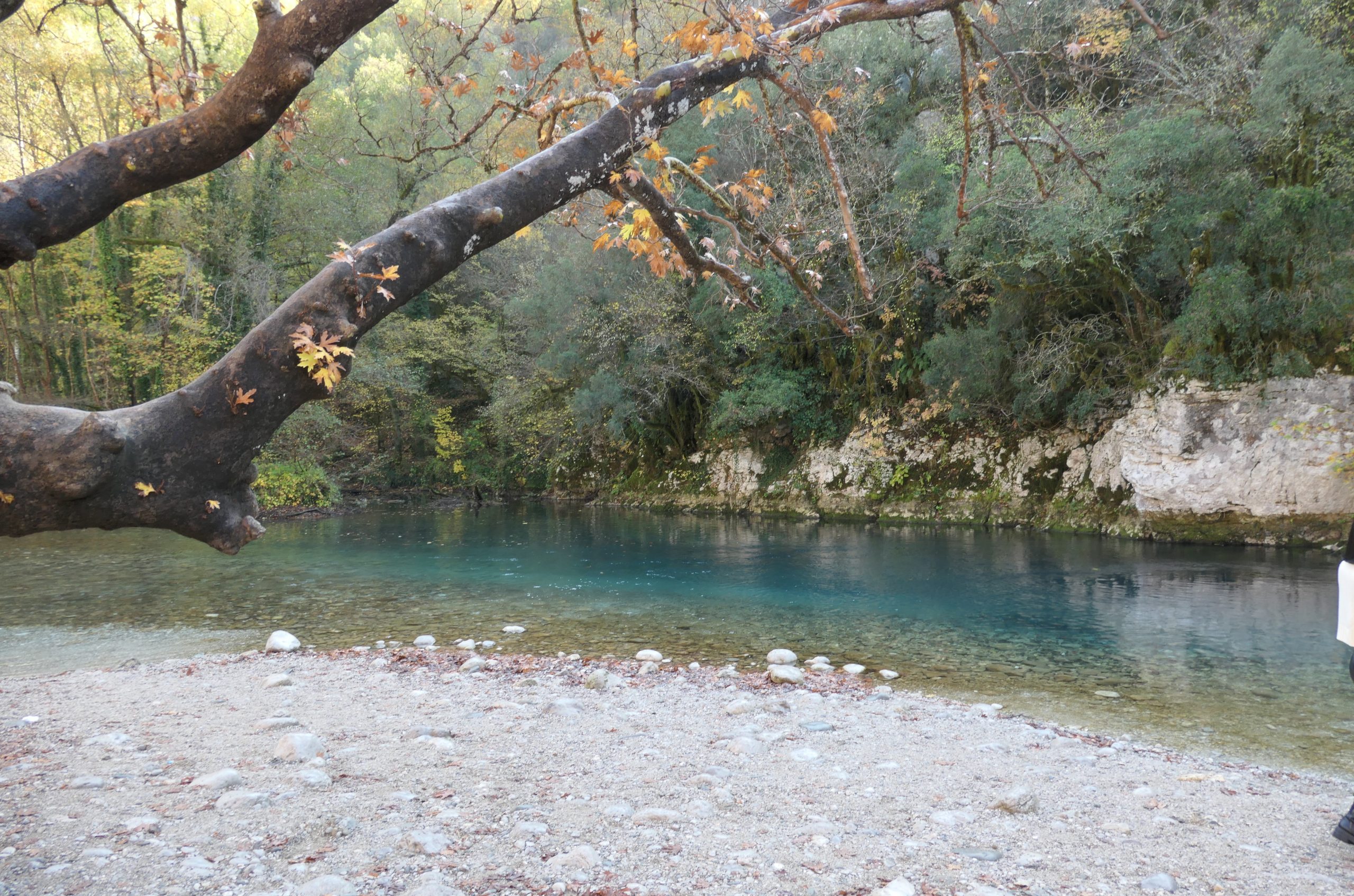
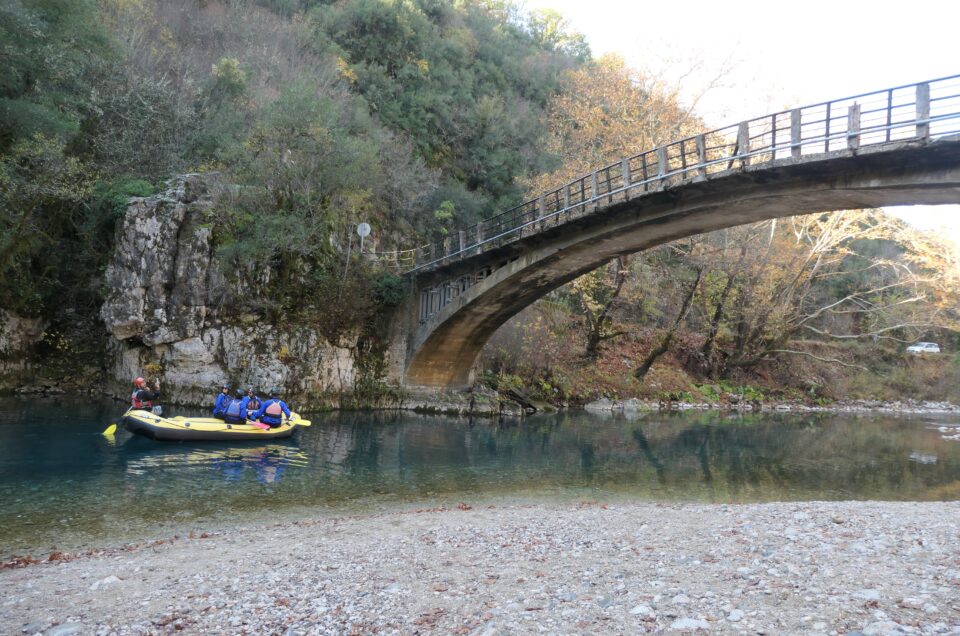
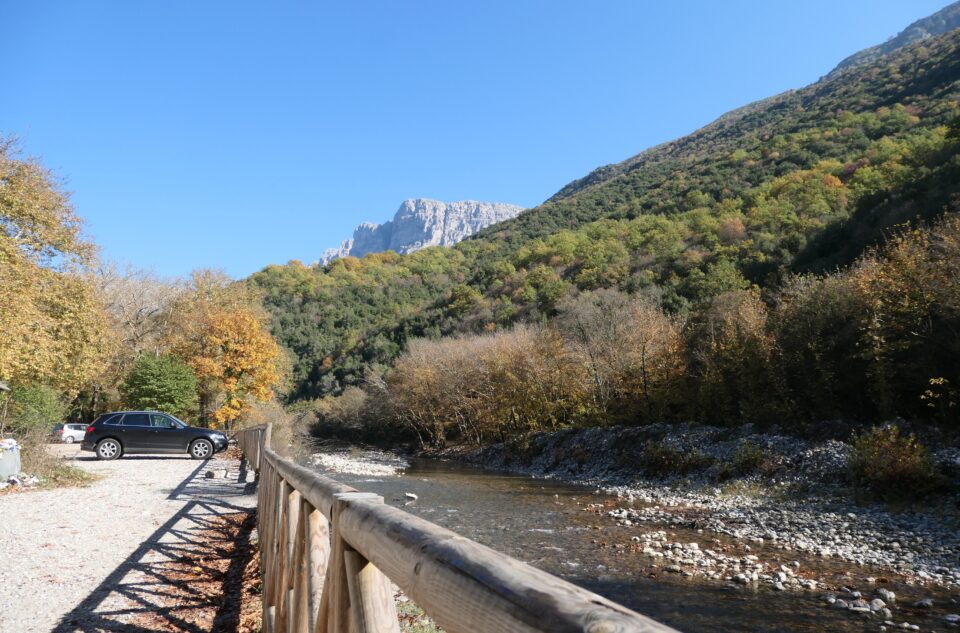
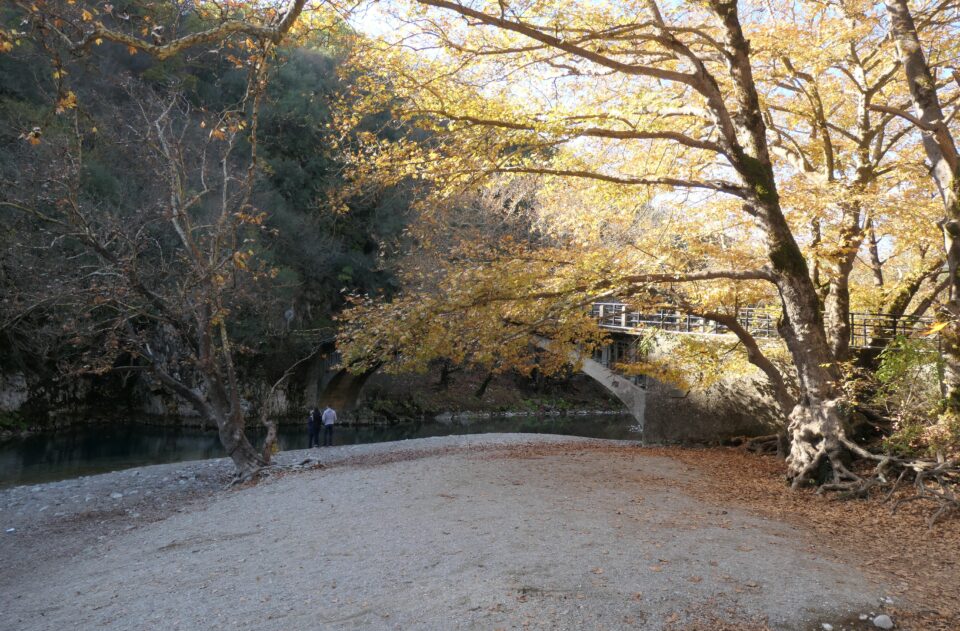
We then drove up the mountain, towards Mikro Papigo – a small town that sits high up at the end of the paved road. Climbing up the mountain, the road had over 15 hairpin turns, one right after the other.
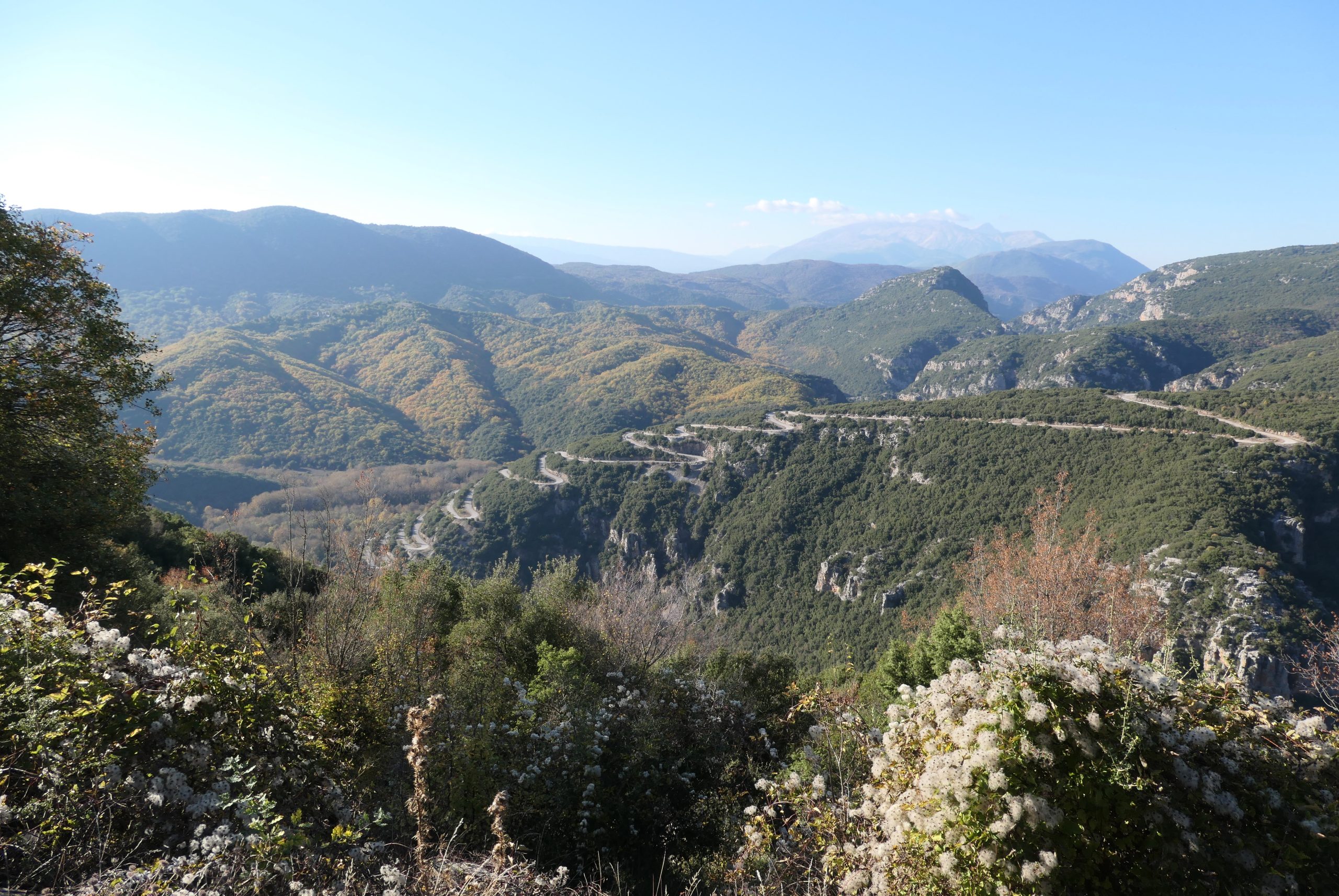
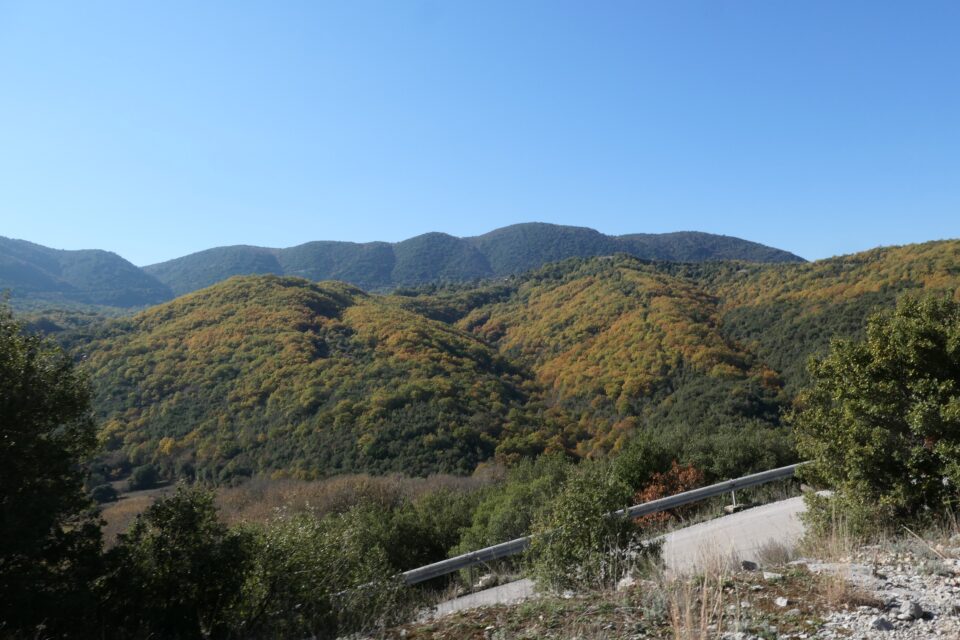
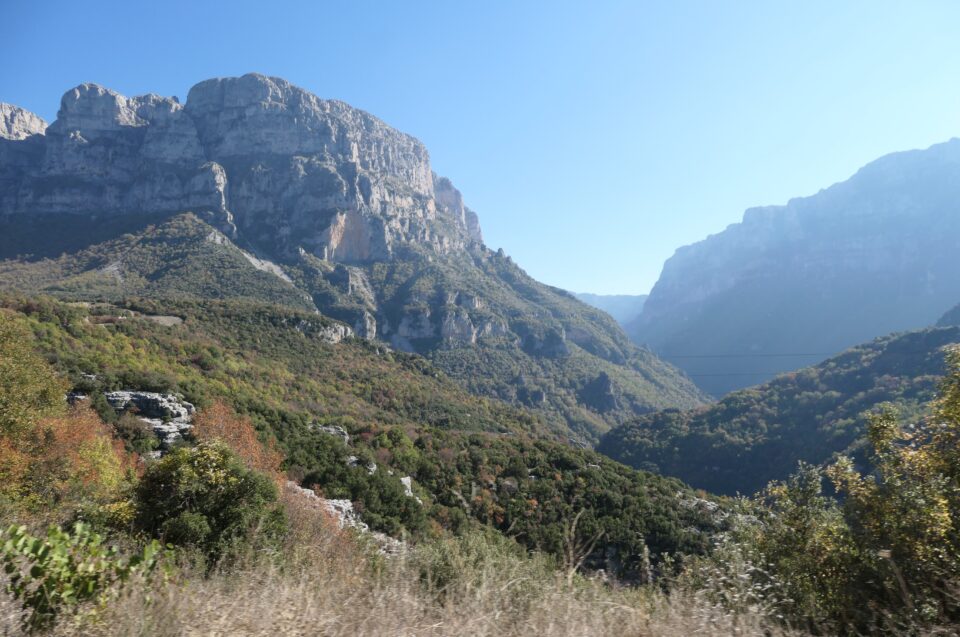
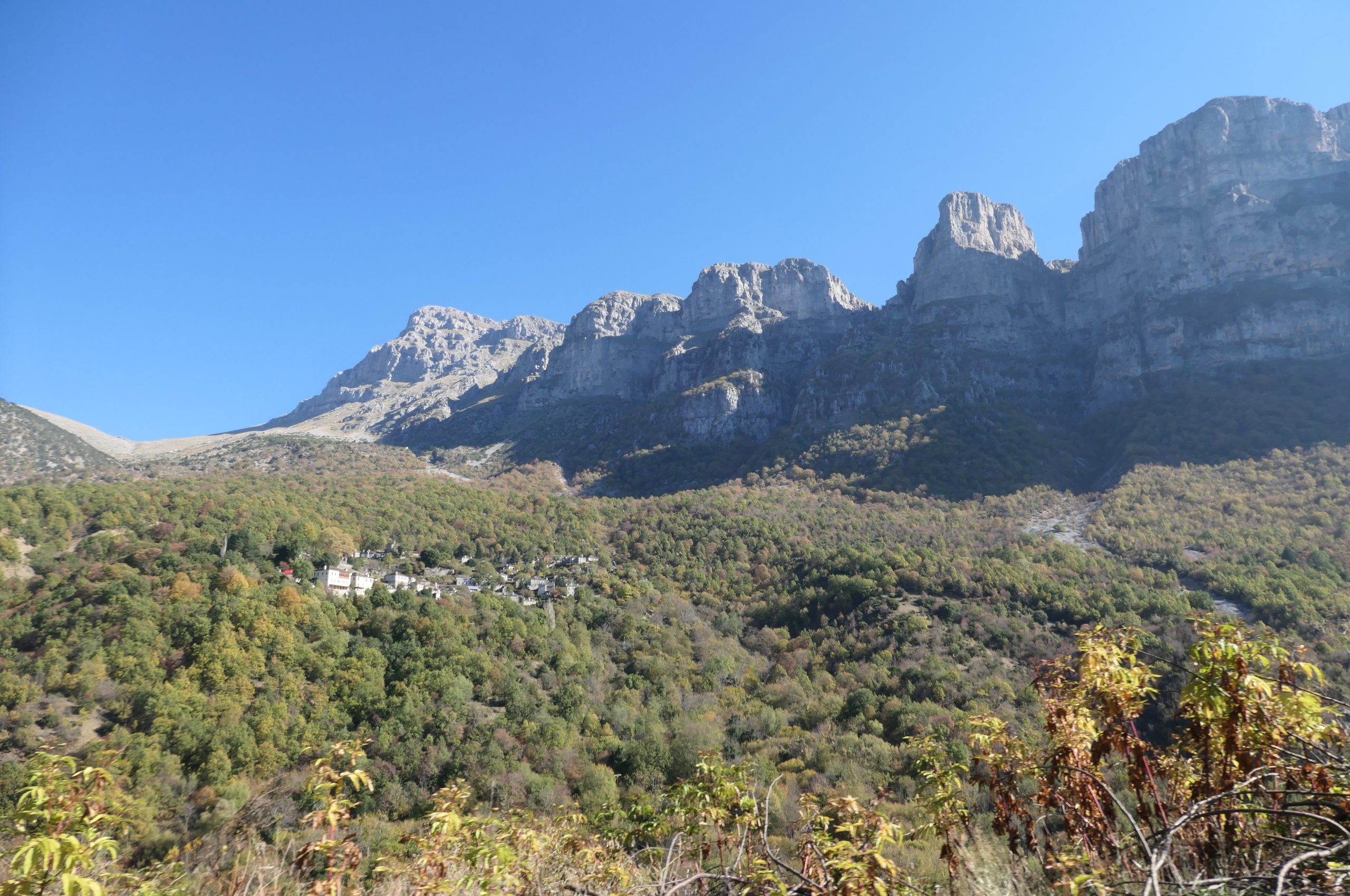
Before reaching Mikro Papigo, we stopped at the Papingo Rock Pools. This is a narrow ravine with small natural pools along its rocky banks. In summer, they dam the pools to create swimming holes. Now, off-season, the water was flowing naturally. Remarkably, we were only three couples walking along the ravine – us, and two other couples also from Raanana.
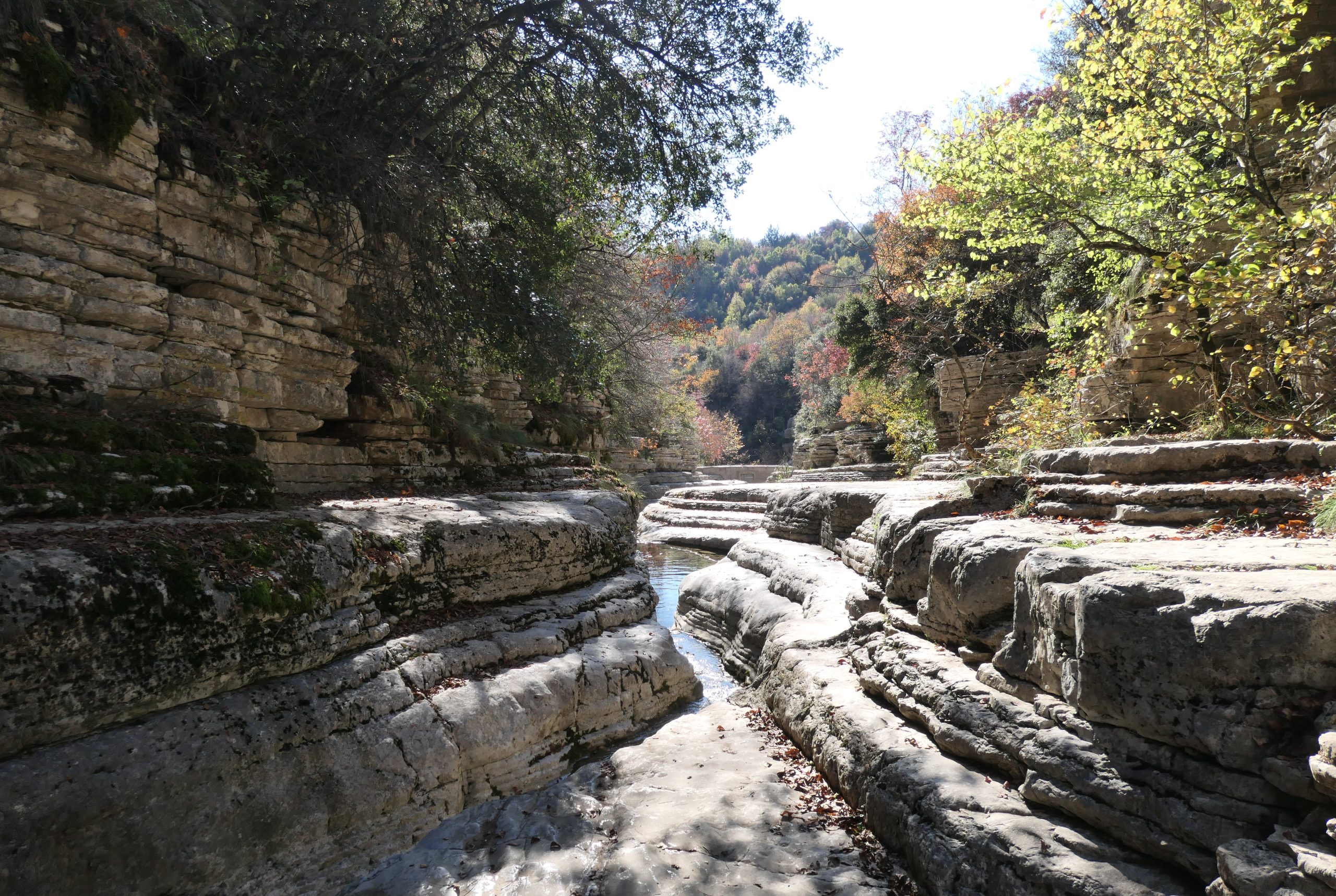
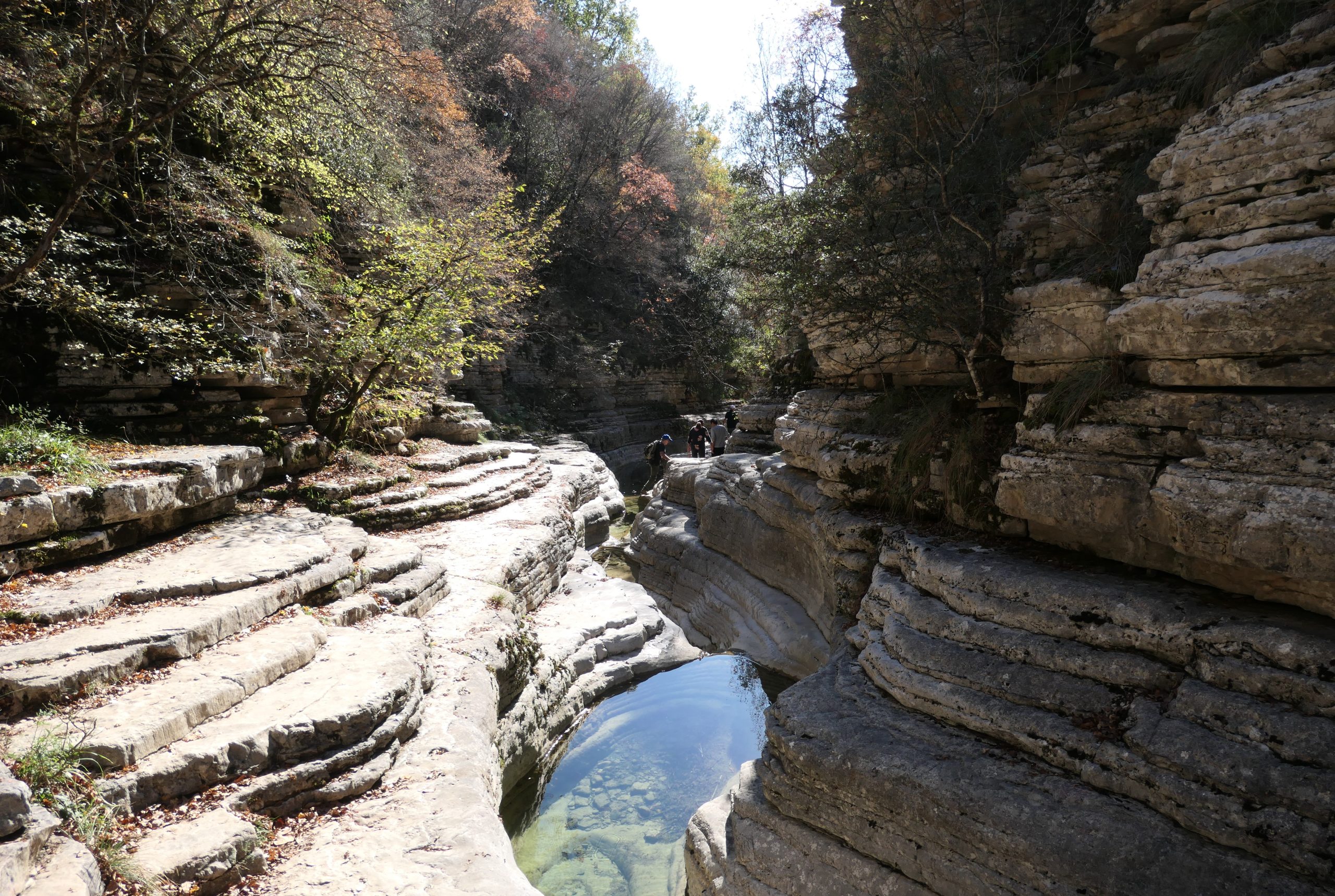

From there we continued up to the end of the road, to the village of Mikro Papigo. There are actually two Papingo towns, the micro and the macro. We had passed the larger one, Megalo Papingo (more commonly known as just Papingo), before reaching the pools. These are the two most visited villages in the area. In Mikro Papigo, we walked around and enjoyed the view.
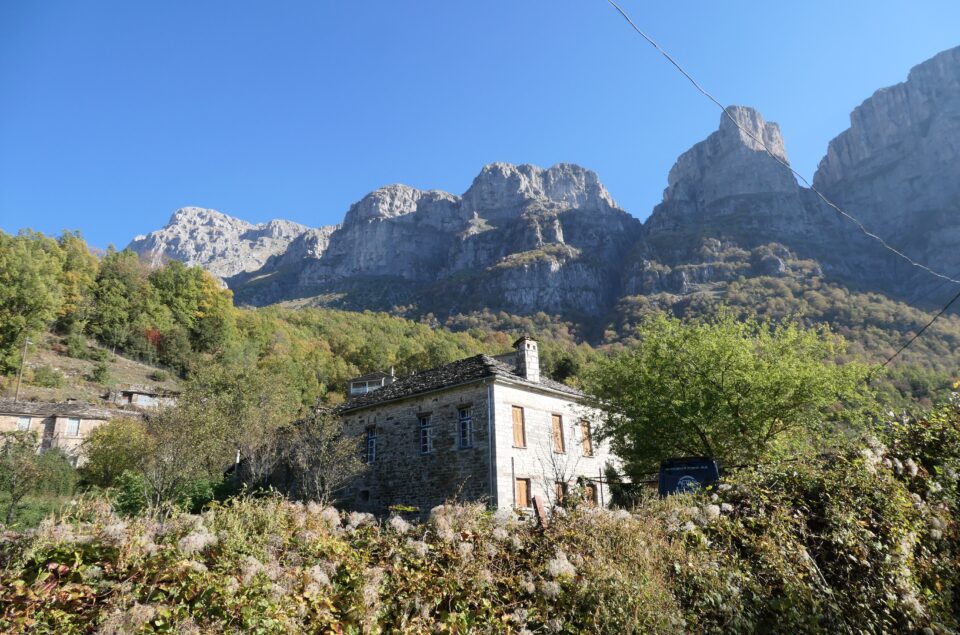
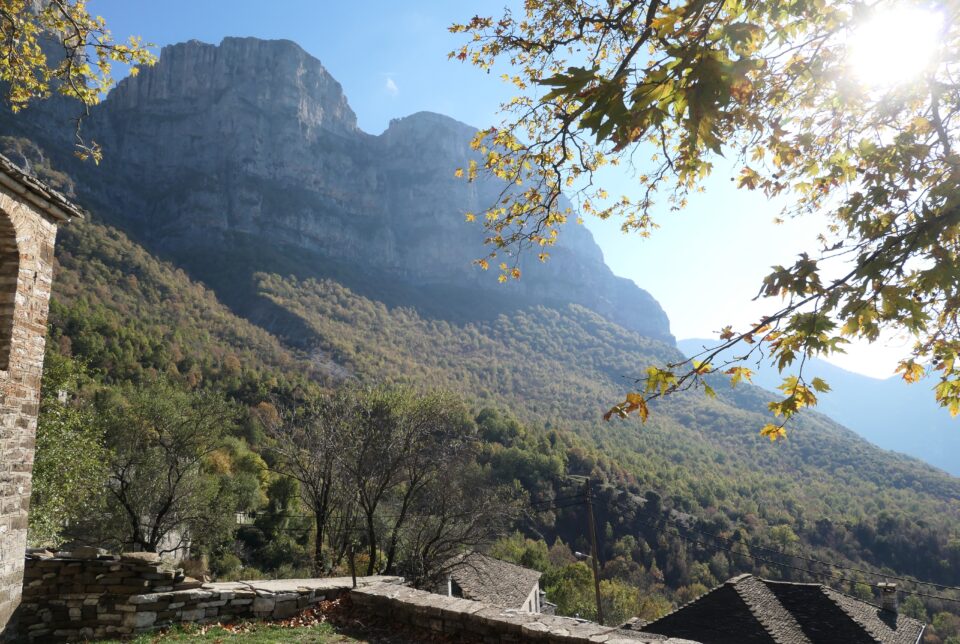
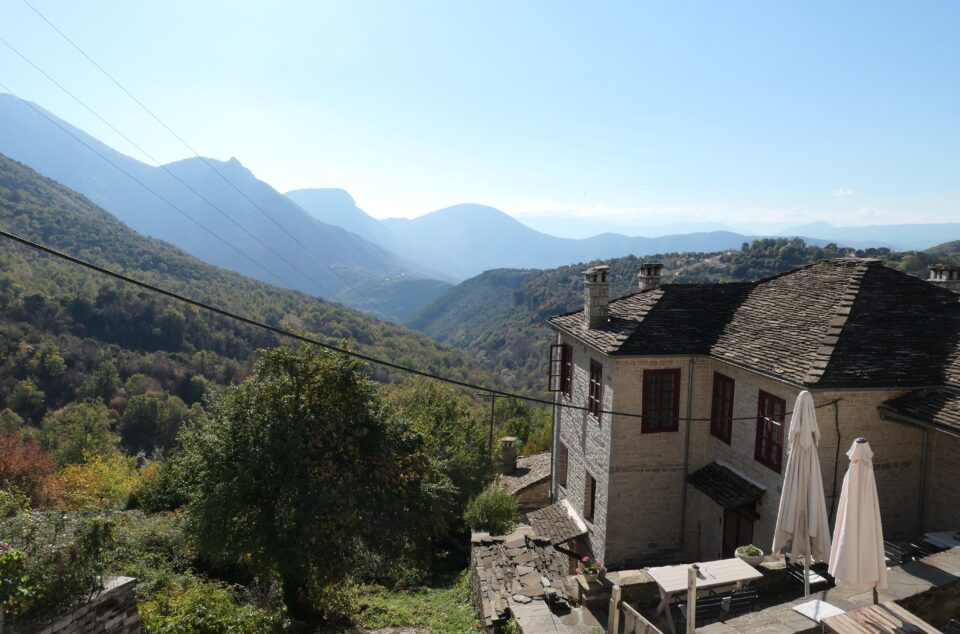
From there it was back down the mountain, returning down the same hairpin turns.
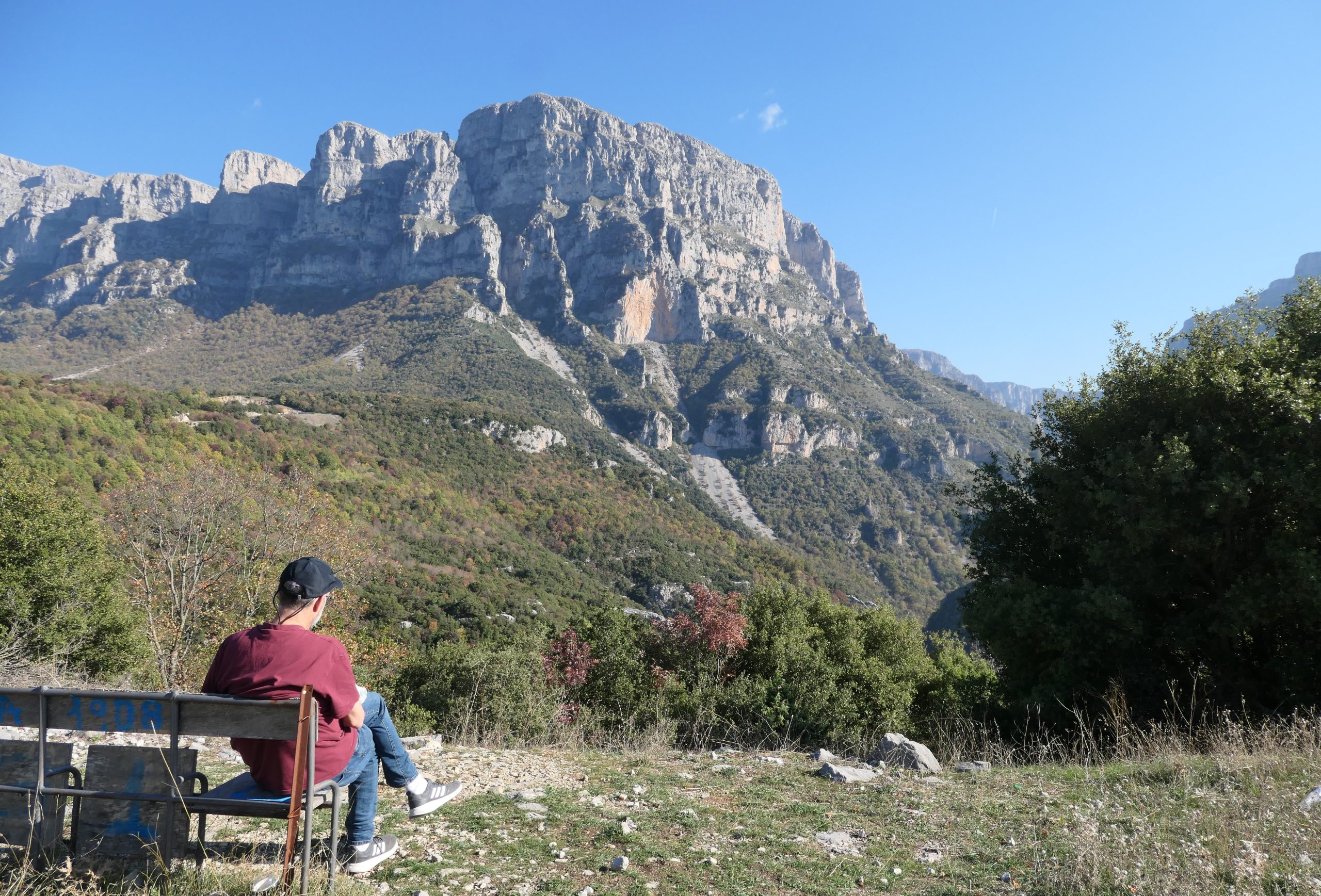
Our next destination was Vikos, a mountain village on the next ridge. In Vikos, there is an overlook to the north end of Vikos Gorge.
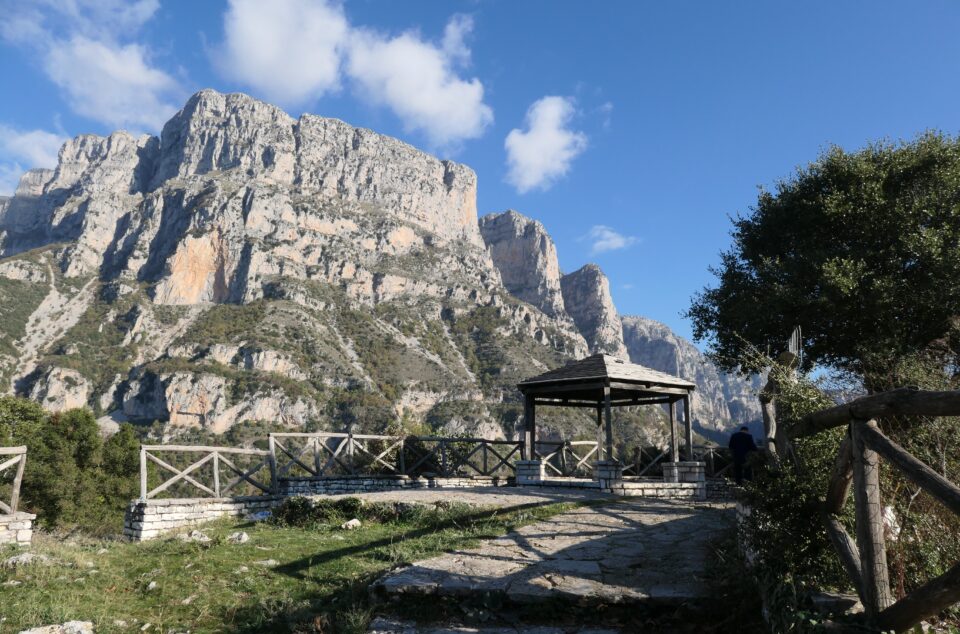
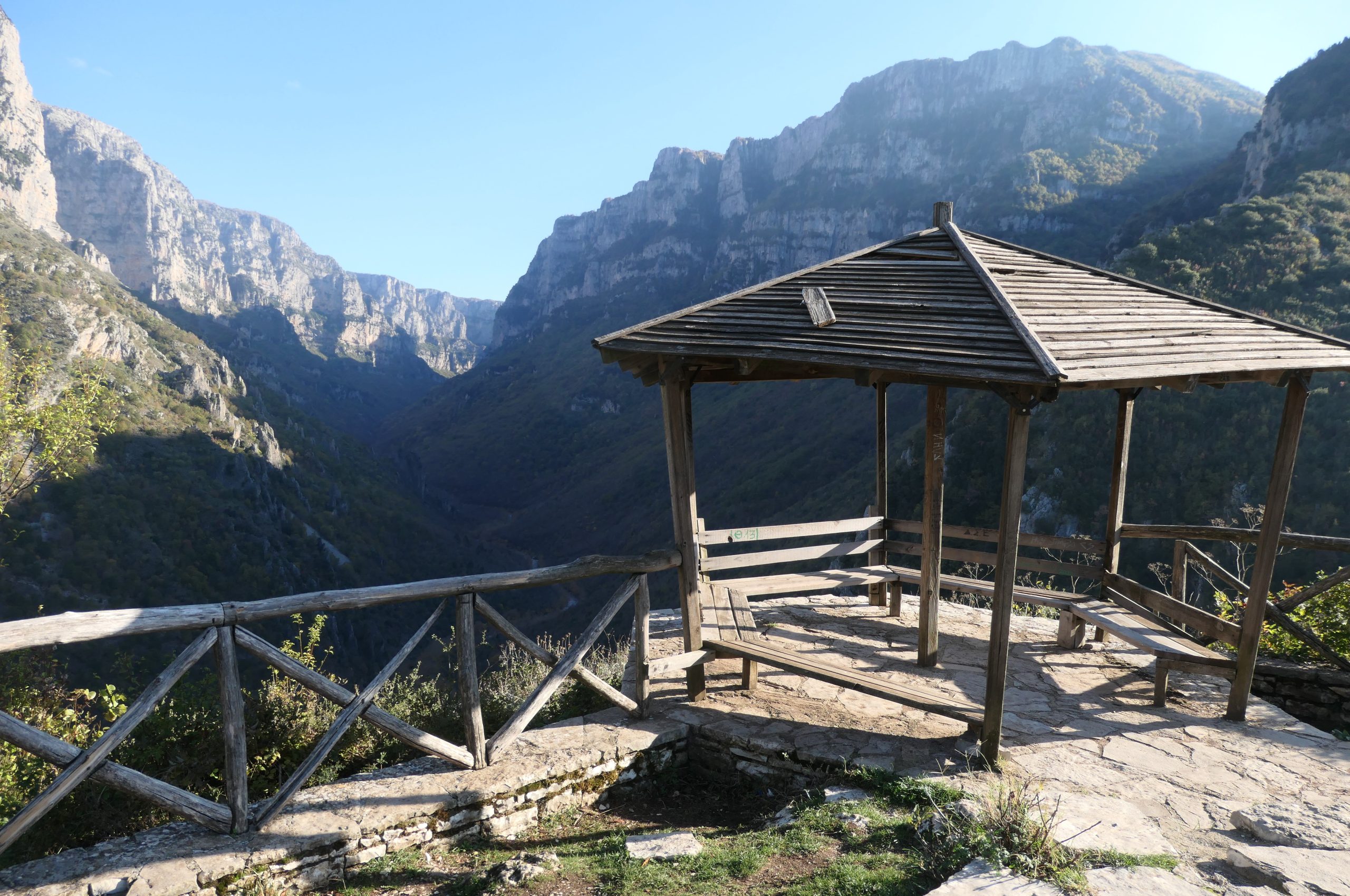

Took so many photos today, that for the first time, my camera battery ran out. It was time to go check-in to our apartment.
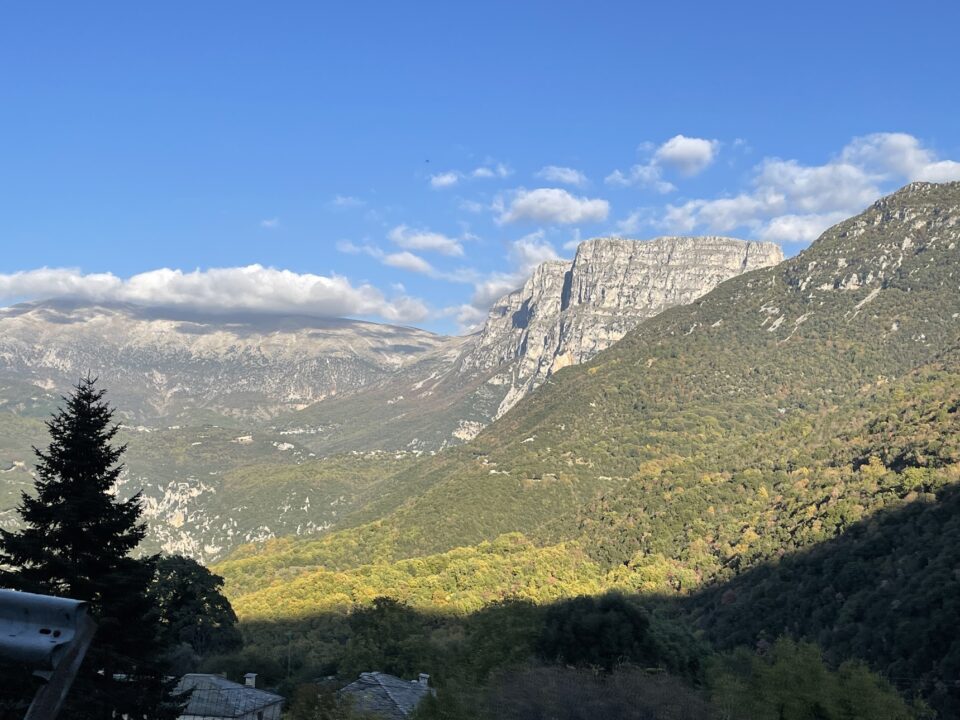
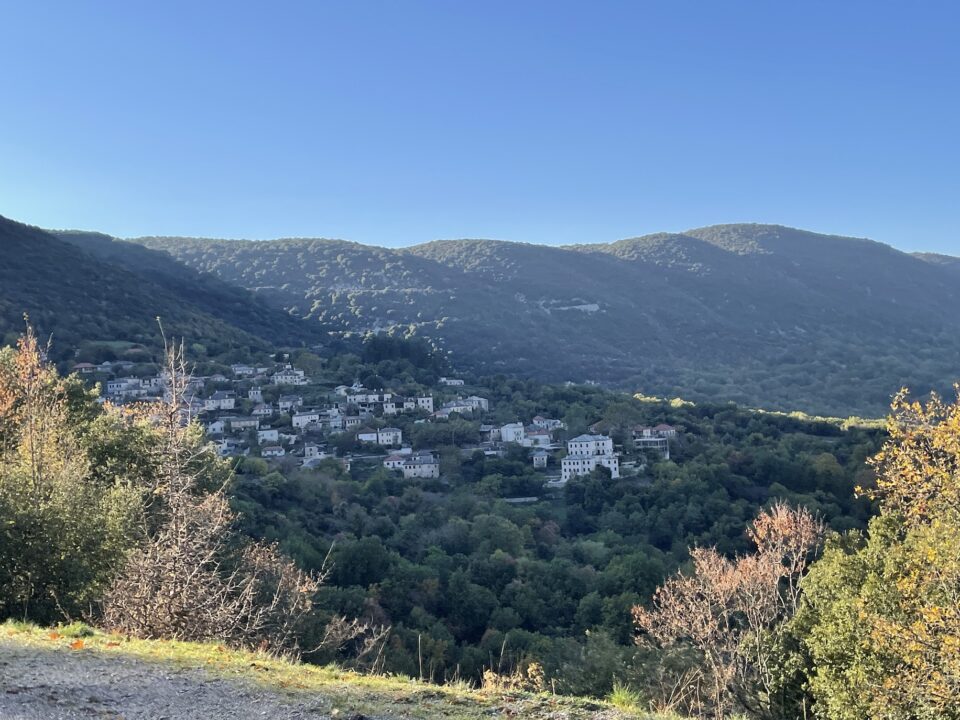
We had lots of trouble finding the place. We were staying in the small mountain town of Aristi, and Google Maps kept bringing us to a restaurant. Coincidently, we had already been in the same restaurant earlier in the day to use their facilities and already had talked to the owner. The place looked nothing like the photos on booking.com. Mark went in to ask the same woman we spoke with earlier, and turned out she also owns a hotel complex across the street, hidden up a big stairway. We took minimum stuff, and trudged up to our place for the night.
More of the beautiful Zagori tomorrow.
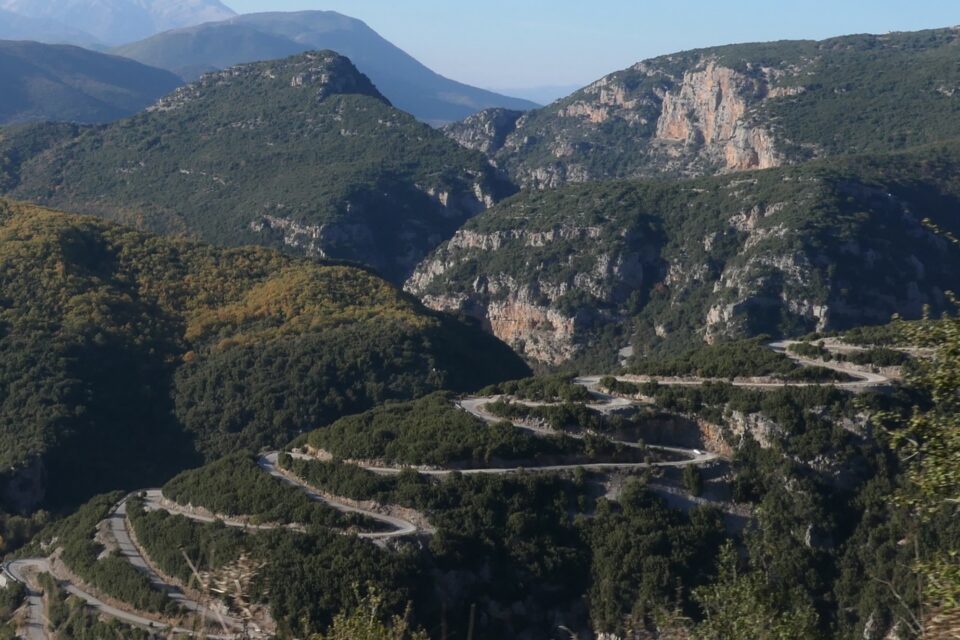
Beautiful views.
Happy birthday to Mark! (I hope I got the date right.)
Thank you Shari.
Those rivers are beautiful